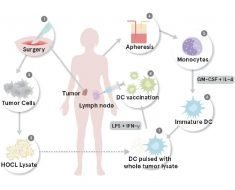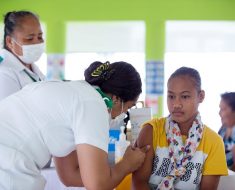In 2014, the United States saw fatal cases of Ebola for the first time. The disease had been mostly contained to West Africa, and U.S. media coverage of the disease in the past had been limited. Now, researchers at the University of Missouri have found that news coverage of Ebola during the time it was in the U.S. focused on telling individual stories to humanize those affected. Based on these findings, the researchers suggest that reporters covering health crises might have a greater positive impact on their audiences if they write human interest stories that share helpful information.
“Media sources such as newspapers often impact the public’s perception on an issue,” said Monique Luisi, assistant professor in the MU School of Journalism. “In this case, a focus on individuals and their stories probably helped people to better understand how Ebola functions and learn about preventative actions they could take.”
Luisi’s team analyzed high circulation U.S. newspapers such as the New York Times and USA Today to determine how stories in each newspaper framed the 2014 Ebola epidemic and how their audiences might understand messaging. Because Ebola quickly became a public health emergency of great importance and relevance to the American public, the media rapidly increased their coverage of Ebola and became a key source of information on the disease and how to prevent it.
The researchers found that a significant proportion of the newspapers covering Ebola used human interest angles to depict in detail how the disease was affecting people’s lives. Human interest stories encourage empathy and make a reader more likely to want to learn more about an issue, which provides opportunities for increased awareness and action, Luisi said.
Efforts to cover what was being done to prevent Ebola also was a popular news topic because it satisfied the public’s desire for a practical solution to the problem. Luisi says this suggests that reporters covering health emergencies should consider writing human interest stories that also share helpful, factual information.
“In times of health crises, the public often relies on the news for trustworthy information,” Luisi said. “Ebola is a disease that the American population as a whole is not familiar with, and in 2014 there was a strong need for information on how to avoid it. This need also might increase with how rampant a disease is. Deadly cases of the flu this year, for example, were followed by human interest stories that included information on how to prevent getting sick or spreading germs.”
Source: Read Full Article





